Faloodeh is a traditional and dearly loved Persian dessert made from frozen vermicelli rice noodles in a rose and lime syrup. Often called a “Persian granita,” this vegan, gluten-free dessert recipe has a satisfyingly crunchy texture and uniquely refreshing flavor. No specialty equipment needed!

I first had Faloodeh as a child after a feast of lamb Kofte Kabobs (Koobideh), Joojeh Kabob (Persian Saffron Chicken Kabobs), and Persian Rice. At the end of the meal, I was presented with a small bowl of frozen noodles with the scent of rose water and a wedge of lime to squeeze over the top.
I was bemused at the concept of eating crunchy frozen noodles as a dessert, but after one bite I fell in love. As an adult, I truly appreciate how special faloodeh is, particularly after a decadent and flavorsome meal.
Faloodeh is often served side-by-side with a Persian saffron and pistachio ice cream known as Bastani Sonati. These two Persian desserts are quickly devoured by many Iranians on hot summer days. Faloodeh is the perfect way to end a rich Persian-style feast, or simply cool off on a hot summer day!
Table of Contents
Where is Faloodeh From?
This ancient dessert is commonly referred to as Faloodeh Shirazi, since it originates from Shiraz in Iran along with the famous Salad Shirazi. Shiraz is often called “the city of poetry and literacy,” in reference to the famous poets Hafez and Saadi. It is a city full of stunning gardens, giving it a dreamy and bohemian quality.
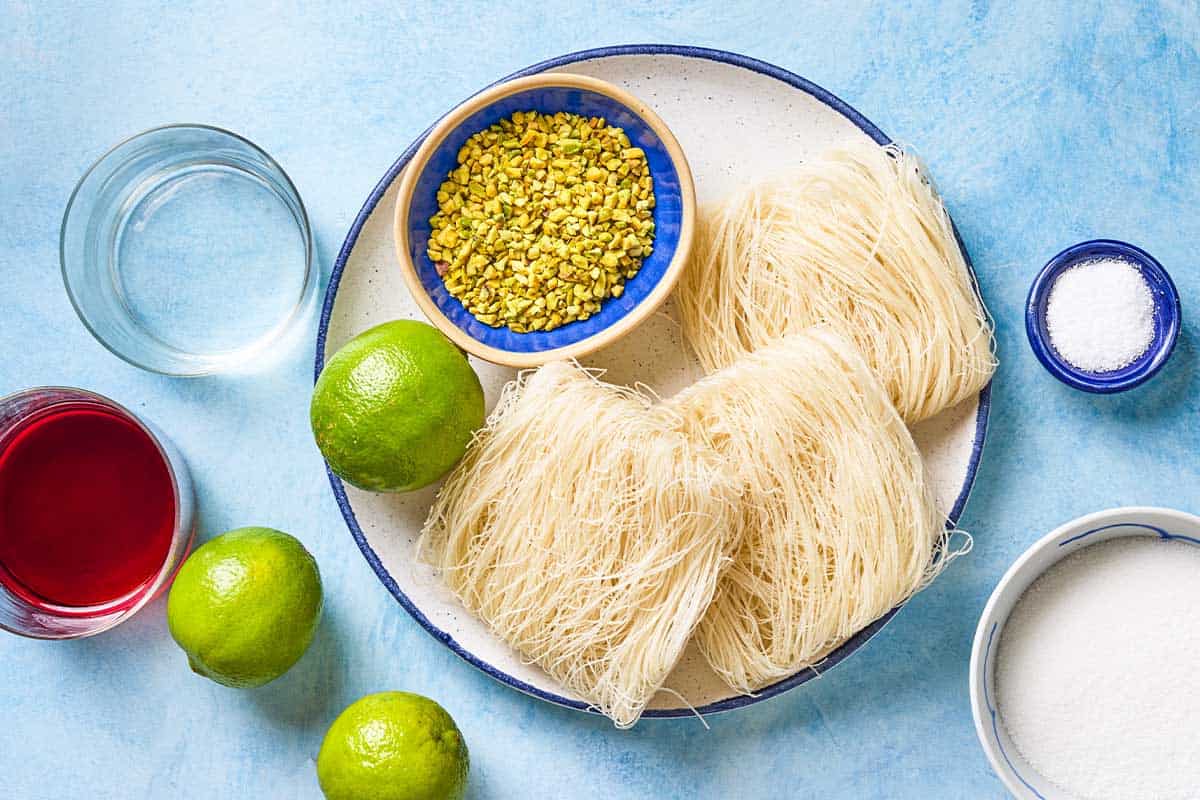
Faloodeh Ingredients
Simple ingredients create this delicious dessert. You will need the following to make Faloodeh:
- Sugar: Used to make the rose and lime syrup.
- Limes: This green citrus fruit flavors the syrup, and lime wedges are served alongside to finish.
- Rose water: Provides the majority of the light and refreshing flavor for the syrup (more info below).
- Sea salt: Enhances the flavors.
- Rice noodles (vermicelli style): it is essential to use white rice vermicelli noodles and not wheat-based ones, otherwise the flavor and texture will not be pleasant.
- To serve: I like sour or tart cherry syrup, slivered pistachios, or pomegranate seeds (or a combination of all three!).
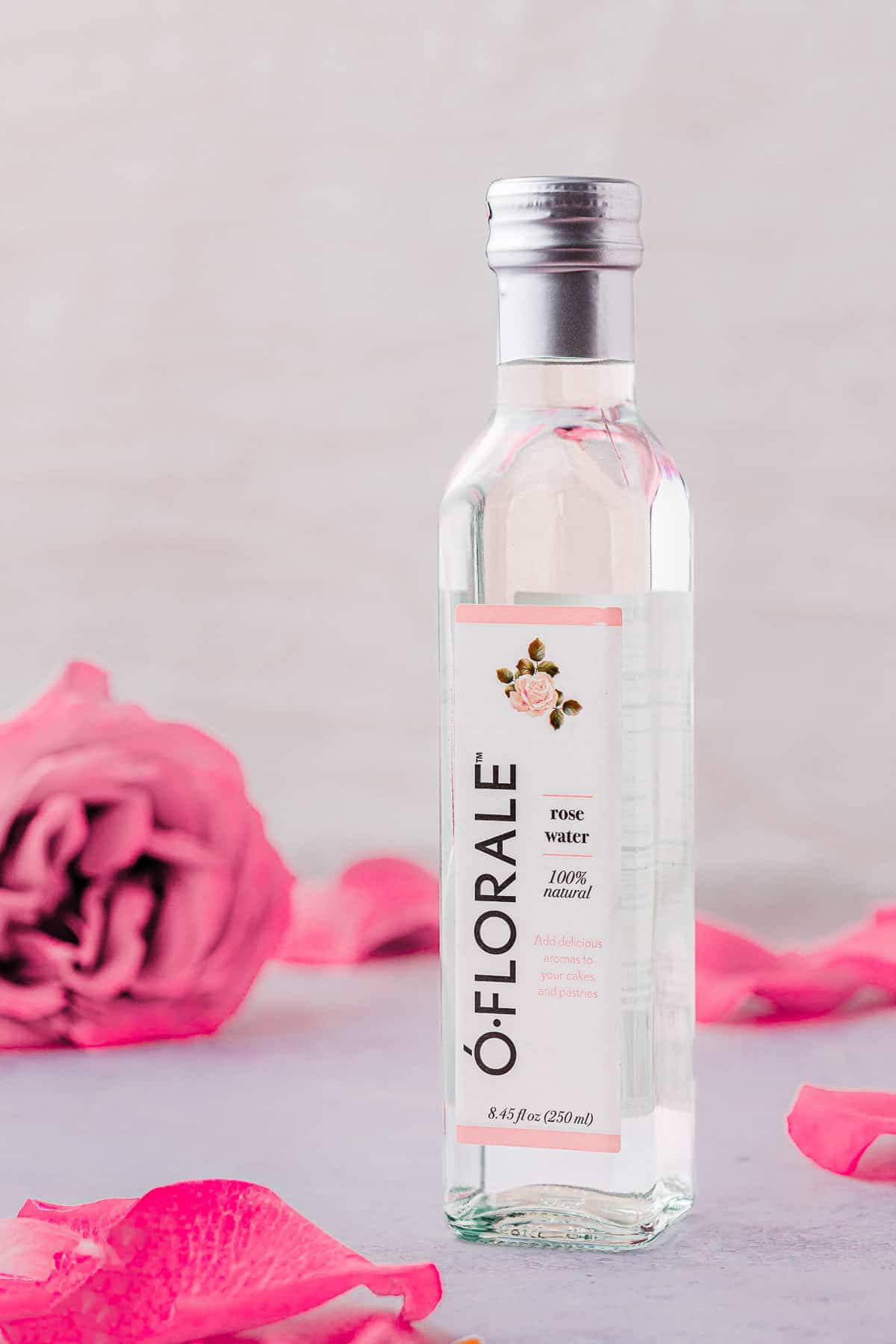
Ingredient Spotlight
Rose water is a staple ingredient for flavoring many Persian desserts, from Mahalabia (Rose Water Milk Pudding) to Persian Love Cake. It adds a delicate, slightly sweet, and fragrant note that gives food a light and refreshing quality. It can be overpowering, so I recommend you start small and adjust to your taste.
- READ MORE: What Is Rose Water And How Do You Use It?
- BEST SUBSTITUTE: Orange Blossom Water
- HOW TO BUY IT: You can find it in most supermarkets nowadays–check out the baking or international aisle–though quality varies. Alternatively, find our favorite all-natural rose water from our shop.

How to Make Faloodeh
Faloodeh takes just 5 steps and a little hands-on work, but does require time. Make it when you’re home for at least 5 hours, as you’ll scrape the mixture every hour for the best texture.
Make the Faloodeh Mixture
- Prepare the rose syrup. In a medium saucepan over medium-high heat, stir together 4 1/2 cups water, 1 1/2 cups sugar, and a very small pinch of salt (about 1/4 teaspoon). Bring to a boil, then reduce the heat and simmer for 5 minutes, stirring regularly. Remove from the heat and stir in 2 tablespoons of rosewater and the juice of 1 lime. Cool the syrup completely, then transfer to a freezer-safe dish and freeze (uncovered) for 30 minutes.
- While the syrup cools, cook the rice noodles. Fill a medium saucepan with water and bring to a boil over high heat. Set a bowl of ice water nearby. Once the water in the saucepan is boiling, add 4 ounces of thin vermicelli rice noodles and cook according to the package instructions. Drain and transfer to the ice water to prevent further cooking and sticking. Once the noodles have fully cooled, drain once more and place them in a bowl. Use kitchen scissors to cut the noodles into pieces, approximately 1 inch in length. Set aside.
Freeze and Scrape
- Add the noodles to the rose syrup: Remove the syrup from the freezer and stir in the noodles. Return (uncovered) to the freezer for 1 hour and 30 minutes.
- Scrape and stir to create the granita-like texture: Remove the mixture from the freezer. Use a fork to scrape the mixture from the sides into the middle of the dish and then stir the mixture. This process avoids icy chunks being formed and creates the granita-style texture. Place the mixture back in the freezer for 1 hour before repeating scraping and stirring. Repeat the process two more times. The texture should be coarse and icy from the frozen syrup, punctuated with crispy noodles.
- Serve the faloodeh: Scrape the noodles with a fork and divide between small bowls and add a wedge of lime alongside. If you like, garnish with a drizzle of cherry syrup and scattering of scattering pistachio slivers and/or pomegranate seeds.
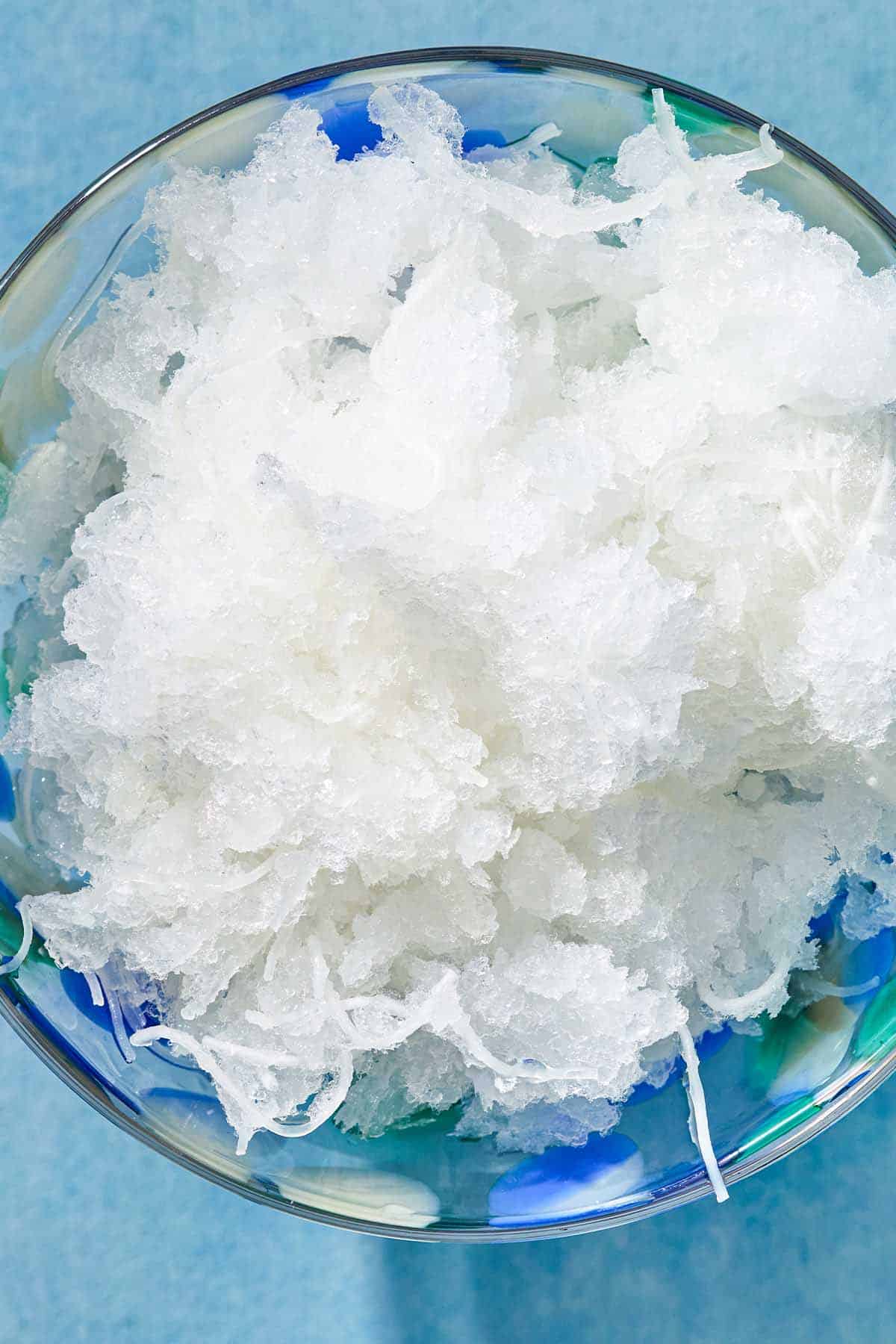
How to Serve Faloodeh
Faloodeh is a fun and festive dessert that goes well with a variety of dishes, but it’s especially welcome after a Persian feast of Joojeh Kabob (Persian Saffron Chicken Kabobs), Shirazi Salad, and Persian Rice.
Scrape the noodles with a fork and place them into your individual serving dishes with a wedge of fresh lime. You can also drizzle tart cherry syrup over the faloodeh and or sprinkle with pistachio slivers and/or pomegranate seeds.
Tart or sour cherry syrup is easy to find online, but you can also make it by simmering tart cherries or tart cherry juice on the stove top. Simply, add 3/4 cup of tart cherry juice to small sauce pan, and simmer over medium low heat until it thickens slightly and reduces by half. Let it cool completely before spooning over the faloodeh.
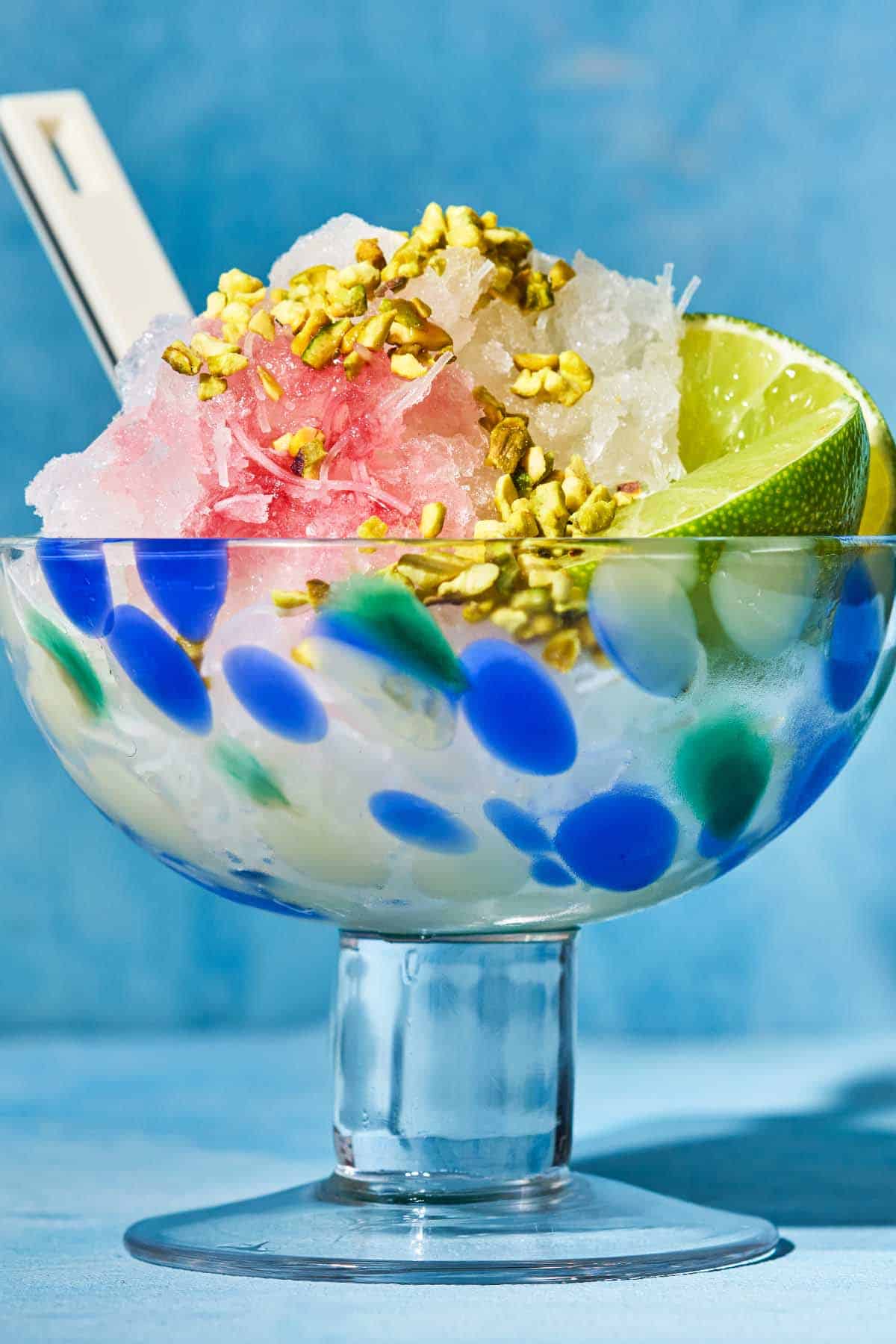
How to Store Faloodeh
Store faloodeh in the freezer for up to 3 months. Remove from the freezer about 10 minutes before serving. Scrape the mixture to create the granita-style texture before ladleing into your serving dishes.
More Rose-Scented Delights
Middle Eastern
Mahalabia (Rose Water Milk Pudding)
Desserts
Turkish Delight (Lokum)
Persian
Persian Love Cake
Faloodeh (Persian Rose and Lime Granita with Vermicelli)

Ingredients
- 1 1/2 cups sugar
- 4 1/2 cups water
- Sea salt
- 1 lime juiced
- 2 tablespoons rose water
- 4 ounces thin vermicelli rice noodles
To Serve
- Lime wedges
- Tart cherry syrup optional
- Slivered pistachios optional
- Pomegranate seeds optional
Instructions
- Prepare the rose syrup. In a medium saucepan over medium-high heat, stir together the sugar, water, and a very small pinch of salt (about 1/4 teaspoon). Bring to a boil, then reduce the heat and simmer for 5 minutes, stirring regularly. Remove from the heat and stir in the rosewater and lime juice. Cool the syrup completely, then transfer to a freezer safe dish and freeze (uncovered) for 30 minutes.
- While the syrup cools, cook the rice noodles. Fill a medium saucepan with water and bring to a boil over high heat. Set a bowl with ice water nearby. Once boiling, add the noodles and cook according to the package instructions. Drain and transfer to the ice water to prevent further cooking and sticking. Once the noodles have fully cooled, drain once more and place them in a bowl. Use kitchen scissors to cut the noodles into pieces, approximately 1 inch in length. Set aside.
- Add the noodles to the rose syrup: Remove the syrup from the freezer and stir in the noodles. Return (uncovered) to the freezer for 1 hour and 30 minutes.
- Scrape and stir to create the granita-like texture: remove the mixture from the freezer. Use a fork to scrape the mixture from the sides into the middle of the dish and then stir the mixture. This process avoids icy chunks being formed and creates the granita-style texture. Place the mixture back in the freezer for 1 hour before repeating scraping and stirring. Repeat the process two more times. The texture should be coarse and icy from the frozen syrup, punctuated with crispy noodles.
- Serve the faloodeh: Scrape the noodles with a fork and divide between small bowls and add a wedge of lime alongside. If you like, garnish with a drizzle of cherry syrup and scattering of pistachio slivers and/or pomegranate seeds.
Notes
- Shop this recipe: Visit our shop to browse quality Mediterranean ingredients including the Rose Water used in this recipe.
- Tart Cherry Syrup is easy to find online, but in a pinch you can use tart cherry juice or concentrate the flavor by simmering 3/4 cup tart cherry juice on the stovetop until it reduces by half. You could also swap the tart cherry syrup with pomegranate molasses.




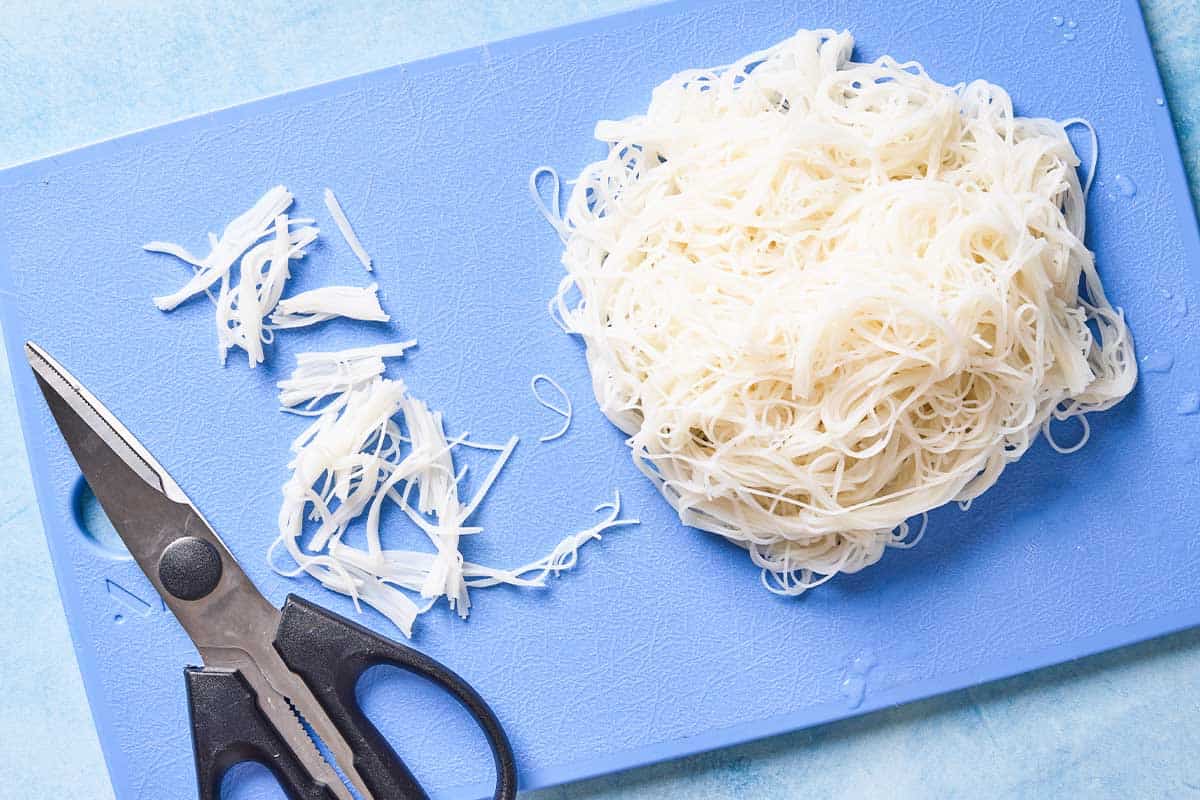





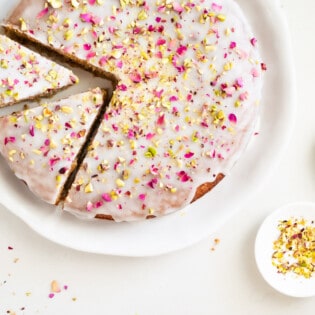
My Faloodeh turned out so ice that even after 2 hours outside the freezer it still could not be scrapped. I followed the recipe exactly, it was good the first day it was made, but not after it was frozen again and the week after.
Any advice? Thank you
Hi, Farrah. It’s an inevitable as the ice crystals will merge and harden. What I would recommend is putting it in a large dish for refreezing so it is a shallower depth for melting and scraping if not eating straight away. You may also be able to help it along with a few gentle blasts in the microwave.
Any way to make it have less ice in it after frozen. The ice seems to break down the noodle too much.